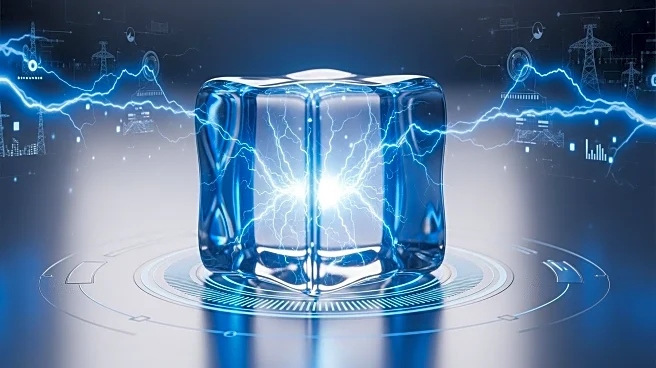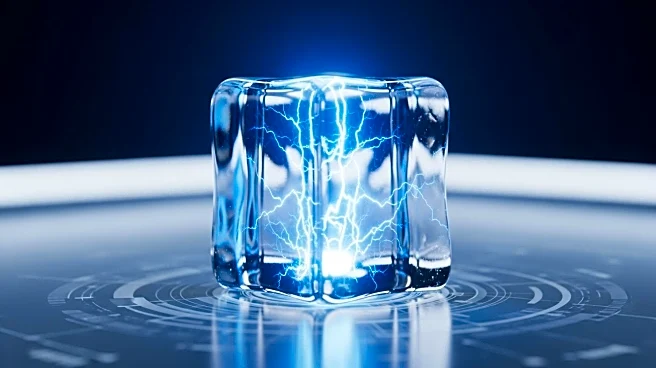What is the story about?
What's Happening?
Researchers have discovered that ice can generate electricity through a process called flexoelectricity, where mechanical deformation of ice produces an electric charge. This groundbreaking finding was made by a team from the Institute of Nanoscience of Barcelona, in collaboration with other global institutions. The study, published in Nature Physics, reveals that ice generates electricity when bent, even at temperatures up to 32°F. This discovery challenges previous assumptions about natural materials and opens up potential applications in environmental monitoring and technology in ultra-cold environments.
Why It's Important?
The ability of ice to generate electricity could revolutionize energy applications, particularly in cold environments. This discovery has implications for developing self-sustaining sensors and devices for environmental monitoring in polar regions. It also offers a new approach to sustainable technology, potentially reducing costs and enhancing device capabilities in extreme conditions. The research highlights the potential of natural materials in energy generation, prompting a reevaluation of their roles in technological innovation and sustainability.
Beyond the Headlines
This discovery challenges existing knowledge about the electromechanical properties of natural materials, suggesting that other materials may also have untapped potential. The research could inspire further exploration of natural materials for sustainable technology applications. Additionally, understanding the flexoelectric properties of ice may provide insights into natural electrical processes, such as lightning formation in thunderstorms, offering new perspectives on environmental phenomena.
AI Generated Content
Do you find this article useful?
















